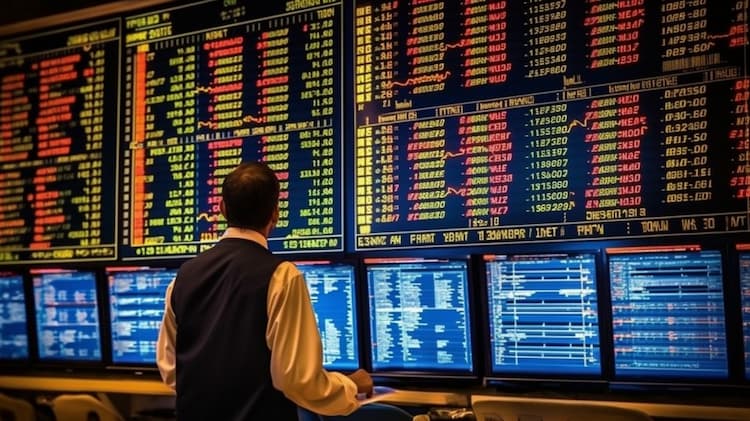KOLD ISSUER
KOLD, issued by ProShares, operates with the primary goal of meeting its investment objective through strategic investments in Natural Gas futures contracts. To mitigate potential risks and optimize its portfolio, the fund also incorporates swaps into its investment strategy, particularly during instances of market emergencies or disruptions, such as trading halts or flash crashes. Additionally, swaps may be utilized when the market experiences volatility or illiquidity, where buying or selling futures contracts may not be practical or advisable. This diversified approach allows KOLD to navigate various market conditions while seeking to achieve its investment objectives effectively.
KOLD DIVIDEND
As an exchange-traded fund (ETF) specializing in Natural Gas futures contracts, KOLD, managed by ProShares, does not typically offer dividends in the traditional sense. Instead, its returns are primarily derived from changes in the underlying futures contracts' prices. Investors in KOLD may benefit from potential capital appreciation if the prices of Natural Gas futures contracts decrease, aligning with the fund's objective to provide inverse exposure to the performance of natural gas. Therefore, investors considering KOLD should carefully evaluate their investment goals and risk tolerance, as the fund's returns are subject to market volatility and fluctuations in Natural Gas prices rather than dividend distributions.
KOLD TRACKING
KOLD, an exchange-traded fund (ETF) issued by ProShares, aims to track the inverse performance of natural gas prices by investing primarily in Natural Gas futures contracts. The fund employs a strategy designed to provide investors with returns that correspond inversely to the daily price movements of natural gas, making it an effective tool for those seeking to hedge against or profit from declines in natural gas prices. To achieve its tracking objective, KOLD regularly adjusts its portfolio composition, effectively managing exposure to natural gas futures contracts while closely monitoring market conditions. Investors considering KOLD should assess its tracking efficiency over various time frames and market conditions to ensure alignment with their investment objectives and risk tolerance.
KOLD CORRELATION
KOLD, managed by ProShares, typically maintains a strong inverse correlation with the price movements of natural gas. This correlation arises from the fund's investment strategy, which aims to provide investors with inverse exposure to the daily performance of natural gas prices. As natural gas prices rise, KOLD seeks to generate returns that move inversely, effectively hedging against or profiting from declines in the commodity's value. This inverse correlation makes KOLD a potentially valuable tool for investors looking to mitigate the risk associated with fluctuations in natural gas prices or capitalize on downward trends in the market. However, investors should note that while KOLD generally exhibits a strong inverse correlation with natural gas prices over time, this correlation may not always be exact due to factors such as tracking error, market volatility, and other external influences. Therefore, thorough analysis and monitoring of correlation trends are essential for investors considering KOLD as part of their portfolio strategy.
KOLD SECTOR
KOLD, an exchange-traded fund (ETF) managed by ProShares, operates within the energy sector, specifically focusing on natural gas. The fund seeks to provide investors with inverse exposure to the performance of natural gas prices, making it a unique offering within the energy sector. By investing primarily in Natural Gas futures contracts, KOLD allows investors to hedge against or profit from declines in natural gas prices, thus potentially mitigating risk in energy-focused portfolios. Given i ts inverse correlation with natural gas prices, KOLD offers diversification benefits for investors with exposure to traditional energy assets such as oil and gas companies. Additionally, it provides an avenue for investors to express bearish views on the natural gas market without the need for direct commodity trading. As such, KOLD plays a significant role within the energy sector by offering a specialized investment approach tailored to natural gas price movements.
KOLD EXPOSURE
KOLD, an exchange-traded fund (ETF) issued by ProShares, provides investors with exposure to the inverse performance of natural gas prices. The fund achieves this exposure by investing primarily in Natural Gas futures contracts, aiming to deliver returns that move in the opposite direction to the daily changes in natural gas prices. This strategy enables investors to potentially profit from declines in natural gas prices or hedge against the risk associated with upward movements in the commodity. By offering inverse exposure to natural gas, KOLD provides a valuable tool for investors seeking to diversify their portfolios or capitalize on bearish views on the natural gas market. However, it's crucial for investors to understand that KOLD's exposure is directly tied to the inverse movements of natural gas prices and may not perform as expected during periods of heightened market volatility or other unforeseen circumstances. Therefore, thorough research and risk assessment are essential for investors considering KOLD as part of their investment strategy.



